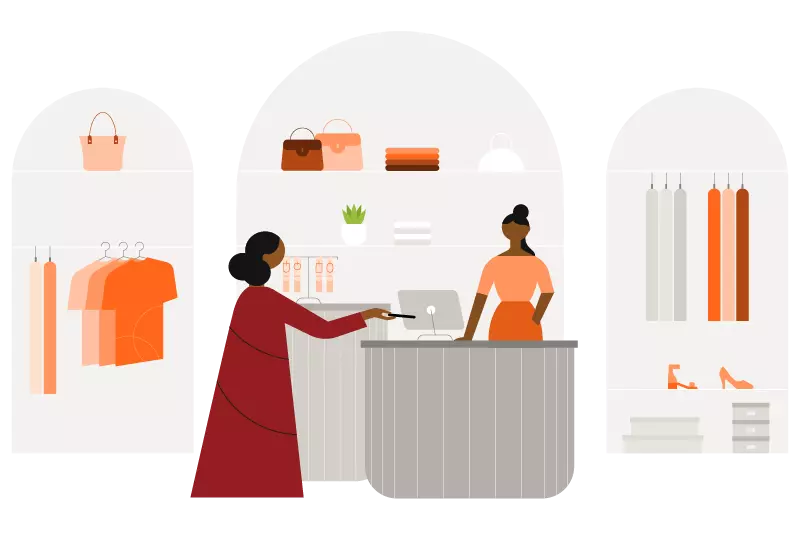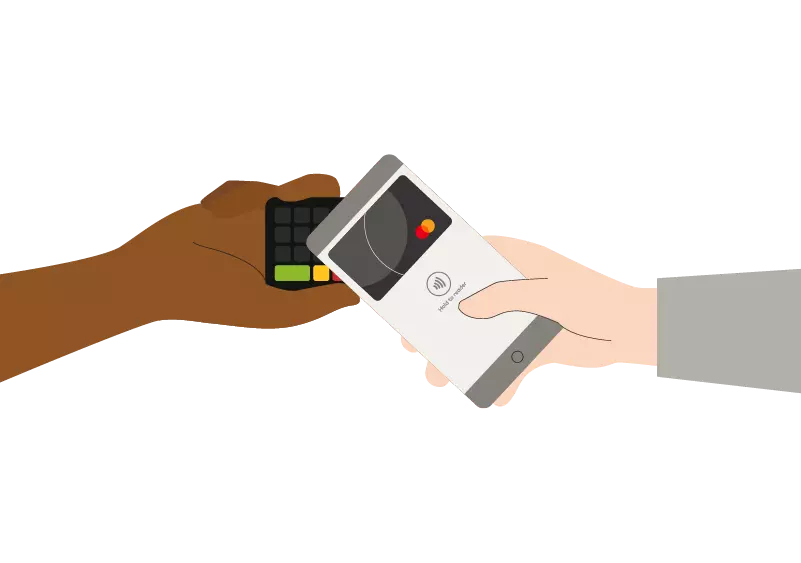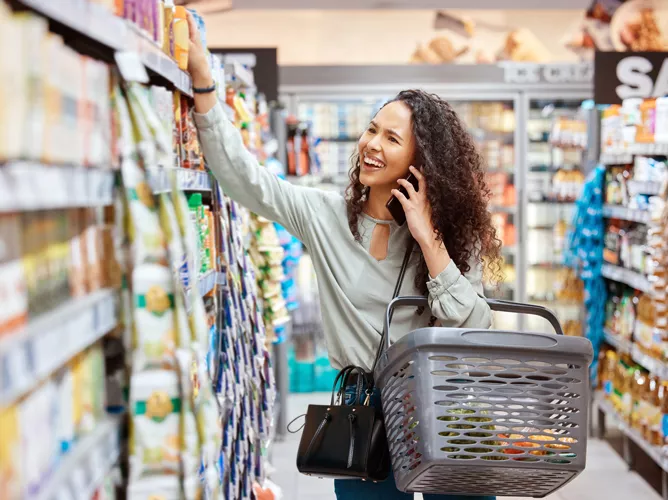Published: March 12, 2024 | Updated: October 29, 2025
Read time: 7 minutes
- Table of contents:
The 2024 retail economy in Latin America
Resilient consumers, particularly in Brazil and Mexico, made 2023 a better-than-expected year for the Latin American retail industry. Despite the challenges posed by economic uncertainties, the retail economy exhibited remarkable resilience.
In 2024, solid labor markets in Latin America will prompt consumers to continue spending – albeit at a slower pace than in 2023 – and the retail industry could benefit from additional disposable income. Food inflation could decrease while interest rates could decline, freeing more space in consumers’ wallets, while debt consolidation may continue making progress.
The reduction in interest rates, which occurred earlier and at a swifter pace in Latin America, has favored retailers dealing in high-ticket items like appliances, electronics, and automobiles – items that are often financed and sensitive to interest rate fluctuations.
In 2024, consumers will prioritize resources carefully. As they balance their household budgets, they’ll be seeking deals and discounts. Latin American retailers will focus on aligning their strategies with the macroeconomic conditions. The ongoing decline in interest rates, debt consolidation efforts and stronger consumer purchasing power will all be top of mind.

Here are the 2024 trends that will shape the retail industry in Latin America:
Trend #1: Convenience, price, best product and immediacy all drive the online and offline shopping experience
Walk down the aisles of any big-box store and chances are, some of the shoppers you see will have phones in hand. They scan shelves filled with dozens of options, then use their phones to check for the one with the best online customer reviews. They study the shelf prices against online prices. In the end, shoppers find the cheapest and best-rated product, whether in store or online. If the best deal is online, shoppers may walk out without purchasing from the brick-and-mortar but instead from the digital competitor.
If the price is right, some shoppers are willing to buy online and wait for delivery. Others will get their item sooner by searching online for a nearby store. And still others will prioritize delivery speed by ordering online for delivery to their door in 30 minutes.
Zé Delivery in Brazil is Latin America’s largest alcohol and beverage delivery platform, bringing cold drinks like Budweiser to consumers in 30 minutes or less. Shoppers can order beer, wine, energy drinks, soft drinks, snacks and ice. The service finds cold drinks in the area and delivers them to the customer’s door.
Zé enables owner Anheuser-Busch InBev to go direct to the consumer. Consumers can remove beer – or anything else Zé delivers -- from their grocery shopping list, since they know Zé will be able to delivery it just in time for a party or when it’s time to restock their fridge.
This immediacy is part of a consumer shift toward more control. In the past, some consumers wanted the convenience of online shopping, some wanted the immediacy of buying something in a store, and still others would venture to one specific store to get discounts. Now, the empowered consumer wants to check most, if not all, of the boxes across convenience, price, best product and immediacy.
Trend #2: Large retailers will leverage data-based strategies while small retailers make strides of their own
Many Latin American retailers are still developing their analytics capabilities and the use of data and analytics in their businesses. Large retailers are further along than small- and medium-sized ones.
In this era of fast-evolving trends and deep learning algorithms, retailers must adapt to changing demands and higher consumer expectations to move beyond short-term trends. Embracing technology is crucial to that agility – more than one in four retailers are currently using generative AI solutions, with another 13% planning to adopt them in 2024.
Large retailers in Latin America will look to AI to drive results and integrate the online and in-store shopping experience using tools like Dynamic Yield by Mastercard’s Shopping Muse. This consumer-permissioned advanced generative AI tool changes how consumers search for and discover products in a retailer’s digital catalog.
Shopping Muse recreates the in-store human experience by translating consumers’ colloquial language into tailored product recommendations. For example, if a shopper is seeking an outfit for a beach wedding, rather than searching for “linen shirt,” they can search for “beach wedding outfit.” The search might return khakis, linen blazers in various colors and styles, boat shoes and hats. Shopping Muse recommendations match the consumer’s unique profile, intent and affinity and build on the conversation’s context over time.

While large retailers and multinational consumer goods companies are building analytical expertise, many regional and local retailers’ day-to-day business decisions are not data driven. Still, they’re making strides of their own.
In Brazil, Unilever Global’s Compra Agora marketplace, an eB2B platform, helps small retailers meet changing shopper needs with features like extended payment terms and cashless payments that help them keep their shelves stocked. They can place orders, track stock and shipments and see prices and promotions. Digitally enrolled customers grew by 4% more than offline-only stores in 2021.
Another B2B e-commerce and SAAS platform, BEES, operates across dozens of countries including Argentina, Bolivia, Brazil, Colombia, Ecuador, Mexico, Paraguay, Peru and Uruguay. The platform aims to help small businesses in the digital transformation process. It enables small retailers to browse for products, place orders, earn rewards, arrange deliveries, manage invoices and access business insights all in one place.
- Sidebar
Brands explore options for creating loyal consumers
In 2024, rather than build a traditional points-based loyalty program or participate in a large coalition loyalty effort, retailers are exploring simple, cost-effective alternatives to connect with consumers.
“Loyalty light” is one such alternative. Retailers simply ask customers to identify themselves by phone number or email. The retailer then uses that volunteered information to create offers. This method allows brands to test the waters with loyalty without incurring the substantial cost of investing in a formal program.
“Gift back” platforms such as Brazil-based CRM Bonus are an innovative alternative. Customers who make a purchase receive a bonus or discount to use on a purchase at another retailer on the platform. For example, when a customer buys at a big-box store, they are offered a discount if they make a purchase at a specific pharmacy retailer within a week. The program helps grow consumer loyalty while reducing retailers’ customer acquisition costs.
Trend #3: Evolving ways to pay emerge
Today’s shoppers no longer rely on a narrow list of payment options. They don’t restrict themselves to paying with cash or whipping out a checkbook to make a purchase. Consumers take advantage of various payment options, which will only continue growing. In 2024, several key payment types will expand, including installments, biometrics and real-time payments.
Consumers in Latin America continue to demonstrate their openness to testing new payment methods and their adoption of electronic payment methods. In this regard, cards continue to be the preferred medium and use of alternative digital methods has increased exponentially, while the use of cash has decreased.
Buy now, pay later is one way retailers are offering payment options to customers. The number of people using installments globally is expected to quadruple as more retailers offer buy now, pay later at checkout, both in-store and online. Juniper Research expects the number of people using installments globally to grow from 350 million in 2021 to 1.5 billion in 2026.
Consumers have used installments to make purchases of larger ticket items, allowing them to space out payments with limited fees. Retailers will focus on making sure the installments products they offer through third-party providers are governed by responsible lending practices so their customers are able to make responsible spending decisions. As installments become table stakes, these programs should be backed by the strong consumer protections people have come to expect from other ways to pay.
The wide variety of payment options and their unique features bring complexity to the reconciliation of those payments. Still, consumer choice is vital in this dynamic landscape. Careful consideration of complexity, customer demand and business implications must be part of the process of integrating evolving payment methods. Retailers must walk the line between being customer-driven and assessing the real cost of incorporating new payment options.

Conclusion
The retail economy in Latin America has proved resilient amidst economic challenges. While Brazil and Mexico led the charge with positive economic performance, other countries in the region also paving the way for enhanced growth. Retailers must align their strategies with the ongoing decline in interest rates, debt consolidation efforts and income sensitivity. By embracing these trends and adapting proactively, retailers can navigate the evolving landscape and harness opportunities for success in the Latin American retail market in 2024.
To learn how Mastercard is helping brands and retailers drive customer engagement and profitability through data, insights, personalization, loyalty, business experimentation and consulting, reach out to your Mastercard representative or contact us here.











